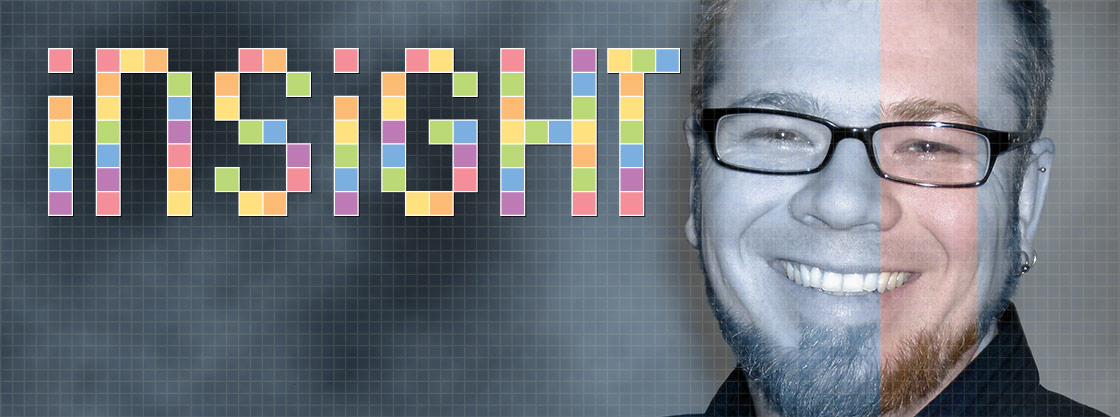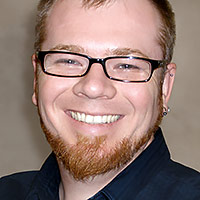A recent Scientific American blog post raised a very tedious and very old complaint about scientific skepticism—in essence, “Paranormal and pseudoscientific claims are trivial. Why don’t you do something I consider important?” The answer I expressed in my previous post is that fringe beliefs are a significant part of the fabric of human existence, and yes, sometimes important in their own right. Seeking to understand those beliefs is a worthwhile research endeavor.
This brought to mind a more interesting question: why does modern skepticism seek to study such a broad and seemingly heterogeneous group of topics—everything from UFOs to climate denialism to mermaids to quack cancer cures?
Philosopher Austin Dacey posed this latter question in a 2011 article after attending a skeptics conference in Las Vegas (The Amazing Meeting). Adopting “the eye of an anthropologist,” Dacey observed that “the remarkable thing was just how non-obvious, even peculiar is the selection of subjects that characterize contemporary organized skepticism.”1 Skeptics collect dozens, indeed hundreds of fringe topics under our research umbrella while choosing not to focus on other topics we consider unrelated—embracing “a kind of canon,” Dacey noted, that “can appear quite odd and contingent. What is it…that binds together ginkgo biloba and El Chupacabra, cold reading and cosmic fine tuning? Why this canon?”
Unified by Neglect
Dacey offered one important and accurate answer to that question in part two of his essay, arguing (with reference to my own work) that the topics skeptics address are unified by the neglect of other fields of scholarship. Seeing this neglect, Dacey explained, scientific skeptics are motivated to ask “how can we be of most service?”:
The successes of organized skepticism on its canonical topics can be attributed to a unique expertise on these topics. These are areas that attract, in Daniel’s phrase, “enthusiasts but no legitimate experts.” Here the phenomena are believed to lie beyond the reach of normal science, either because they fall in between the traditional disciplinary boundaries (e.g., astrology) or beyond the ken of empirical methods altogether (e.g., miracles). Skeptics are the experts at formulating and evidentially supporting naturalistic explanations of phenomena believed to lie beyond the reach normal science. They labor in the disputed borderlands of science.2
As I emphasized in my 2013 essay “Why Is There a Skeptical Movement?” (PDF),
When we stick to the paranormal stuff we do well—our only unique contribution—we occupy a niche.
But that’s what skeptics do. It’s not a bug, but a feature. It is our task to work at the fringe, tackling the things that fall through the cracks, the topics other experts ignore.3
Unified by Structural Similarity
But neglect is not the only factor that unites paranormal, pseudoscientific, and conspiratorial beliefs. In many cases, fringe claims share structural similarities—the kind of similarities that make terms like “pseudoscience” meaningful (though admittedly fuzzy and complex). Exploring these common threads provides a consilience of useful insights across a range of fringe topics.
Among the best-known of these common themes is a rhetorical strategy, as Sharon Hill describes it, to “co-opt the symbols and processes of science. Dressing up and acting all sciencey-like is a tactic used by intelligent design advocates/creationists, cryptozoologists, ghost hunters, and UFOlogists, among others.”
Fringe claimants echo each other frequently across topics that bear little superficial resemblance, employing similar arguments, making similar complaints, and stumbling through the same fallacies. Creationists, energy healers, Near Death Experience researchers, and parapsychologists all want to push back against the “materialist paradigm.” Practitioners of mutually incompatible systems of pseudo-medicine unite under umbrella marketing terms such as “complementary,” “holistic,” and “integrative medicine.” Bigfoot proponents, parapsychologists, and homeopaths insist alike that science won’t “consider the evidence” that science has considered many times and found wanting. Flat-Earth advocacy, “chemtrail” paranoia, anti-vaccine hysteria, Holocaust denial, UFO “disclosure” demands, and the 9/11 “Truth” movement all make similar assumptions about vast and nefarious conspiracies to “conceal the truth.”
In many cases, different fringe claims are functionally identical, differing only in their patter and stage dressing. Therapists specializing in “recovered” memories of either alien abduction or Satanic Ritual Abuse use the same techniques of hypnosis and guided questioning to inadvertently implant false memories that inevitably reflect the therapists’ own beliefs. Pendulum dowsers and psychics “locate” desired things through the same mechanisms of guesswork, vagueness, and simple pronouncement. When a faith-healer, spirit medium, or fortuneteller on stage or sitting across an intimate table tells you things “they couldn’t possibly know,” it makes little difference whether they say their information came to them through psychic flashes, Tarot cards, chit chat with spirits, or a direct line from God. In each case, the same techniques of cold or hot reading come into play.
And, of course, seemingly dissimilar paranormal claims often rely upon the same sorts of evidence, and suffer as a result from the same fundamental flaws. Notably, many claims are built more-or-less exclusively upon a “mountain” of eyewitness testimony. Sightings of flying saucers, ghosts, the Loch ness monster, and countless other entities are lovingly compiled by enthusiasts who never truly confront the unreliable nature of eyewitness testimony nor the many known sources of erroneous reports.
Directly Interconnected
Nor is it just that diverging claims may share underlying similarities. Often they’re directly interconnected. The lines between beliefs blur, merge, overlap. Proponents promote multiple claims simultaneously.
For example, some cryptozoologists are Biblical literalists, motivated by their creationism to pursue cryptids in the hope that their discovery will somehow de-legitimize Darwinian evolution. Psychics offer to diagnose and cure disease, while faith-healers miraculously divine intimate personal information about members of their audience. Naturopaths dip liberally into many different alternative treatment modalities. Bigfoot is reported in association with UFOs or exhibiting paranormal powers (glowing eyes, telepathy, or even the ability to “stun a human w/in abt 30 feet. The larger the BF, the more powerful the zap”). Psychics claim to communicate with aliens, Atlanteans, haunted house ghosts, Ascended Masters, and spirits in the afterlife. It is not practical to evaluate such interconnected claims in isolation.
Broad Yet Focussed
What we are left with is very broad portfolio for scientific skepticism, and yet one which is much more coherent and focussed than it may at first appear. First, skeptics concentrate on topics which are at least in principle investigable—“testable” claims rather than claims regarding subjective values or mere metaphysical utterances. Within that scope, we specialize in fringe claims because that is a useful public service. These claims typically lack adequate scholarly attention, yet mislead, influence, and engage the interest of the public. Such weird and wooly ideas often share commonalities which allow them to be usefully approached as subtopics under scientific skepticism’s broad umbrella. Insights gained from the study of one paranormal or pseudoscientific topic may be usefully applied to other parallel beliefs.
In my next post, I will dig a little deeper into one paranormal topic to show why the study of fringe claims is also by its nature multi-disciplinary—explaining why scientific skepticism has always been a community that brings together a diverse range of seemingly unrelated expertise.
References
- Austin Dacey. “Circumnavigations: The Skeptical Canon.” July 26, 2011. http://www.csicop.org/specialarticles/show/the_skeptical_canon
- Austin Dacey . “Circumnavigations: The Skeptical Canon, Part 2.” September 14, 2011. http://www.csicop.org/specialarticles/show/the_skeptical_canon_part_2
- Daniel Loxton. “Why Is There a Skeptical Movement?” (Skeptics Society, 2013.) pp. 52–53. https://www.skeptic.com/downloads/Why-Is-There-a-Skeptical-Movement.pdf (PDF)
52













You know, I do not even think pseudoscientific claims, in particular, are trivial. As I write there are people setting themselves up for disappointment because they are trying to manifest what they want in life through visualization, or leaving lethal ailments untreated save by “natural cures”. I wish scientific scepticism were more mainstream and critical thinking the norm.
Oh my God (you should pardon the expression). The political Fords vs. Chevys “discourse” need not intrude in these precincts.
Fringe beliefs are worth taking very seriously indeed, especially now that Donald Trump (he of the fringe extraordinary) has a real chance of becoming the most powerful person in the world, with the opportunity to wreck all our lives. The worry is not that he necessarily subscribes to the bizarre statements that he throws off about climate change etc, but that millions of voters take him at his word and are persuaded to put him in charge.
Hillary Clinton and her campaign chair John Podesta are the ones who promise to investigate UFOs and Area 51.
http://www.nytimes.com/2016/05/11/us/politics/hillary-clinton-aliens.html
Hillary Clinton wants to release files, not “investigate UFOs and Area 51.”
Huffington Post headline
“Hillary Clinton Vows To Investigate UFOs And Area 51”
http://www.huffingtonpost.com/entry/hillary-clinton-vows-to-investigate-ufos_us_5687073ce4b014efe0da95db
“One way or another. Maybe we could have, like, a task force to go to Area 51.”
Paraphrasing Tolstoy (Anna Karenina): All truths are alike; each untruth is wrong in its own way.
The only true chaos is the hyperspace of imagined untruths.
I was thinking about how skeptical expertise can be organized by discipline versus domain. For example, Captain Disillusion is an expert in the discipline of video editing applied to multiple domains like UFOs, ghosts, and Bigfoot. On the other hand, the domain of Ufology involves many disciplines like astronomy, aviation, history, psychology, and video editing.